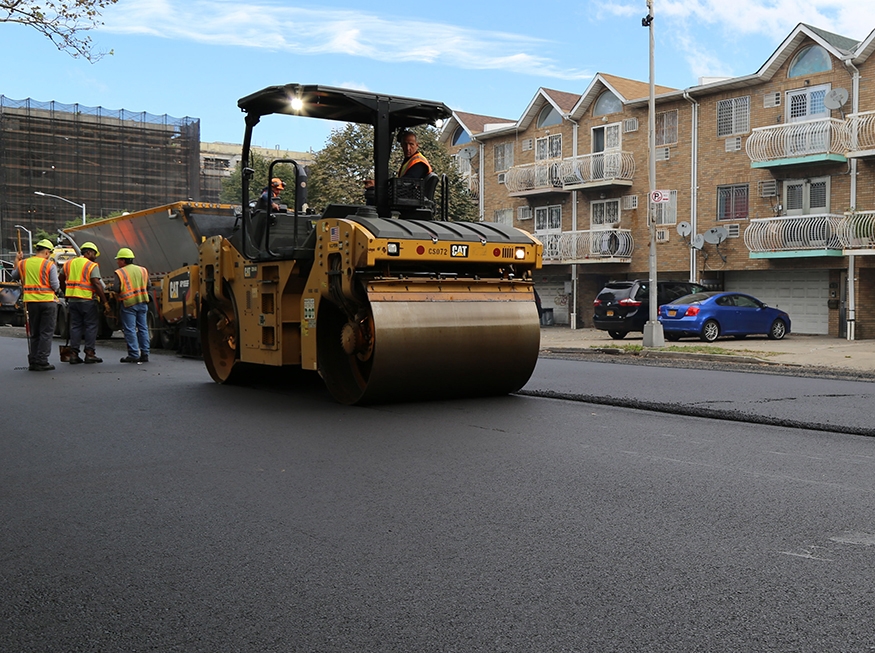Usage: Standard
Commonly known as asphalt, this material is a mixture of asphalt bitumen and stone aggregate, usually laid on a concrete base and compacted by a roller to form a smooth and solid road surface.

69th Street, Queens
Benefits
- Provides smooth and durable road surface with high friction coefficient
- Material is widely available and cost-effective
- Impervious quality channels water to the curb on crowned roadways
- Dark color hides dirt and stains and creates background for high-contrast markings
- Easy to maintain and patch
- Can be pigmented or imprinted for varied purposes
- Asphalt can be recycled
Considerations
- Prone to rutting and shoving under high volumes of heavy vehicles
- Contributes to heat-island effect
- Sends runoff to catch basins, thereby contributing to combined-sewer overflows (CSOs) during large rainstorms
Application
- Standard for roadbeds of all city streets unless otherwise specified
- Preferred road surface for cycling
- DOT generally maintains this material
Design
Specification source: DOT Standard Specifications Section 2.05, 3.01, 4.01, 4.02
Detail source: DOT Standard Details drawing H-1034 and related
- Minimum 3-inch-thick wearing course, typically
- Roadway should be crowned to drain stormwater from the road surface
- Typically requires concrete base
- Sustainability opportunity: High recycled asphalt (RAP) content
- Sustainability opportunity: Warm-mix asphalt
- Sustainability opportunity: High-SRI asphalt
- Sustainability opportunity: Porous asphalt in parking lanes
Maintenance
Easier to repair than other roadway materials

